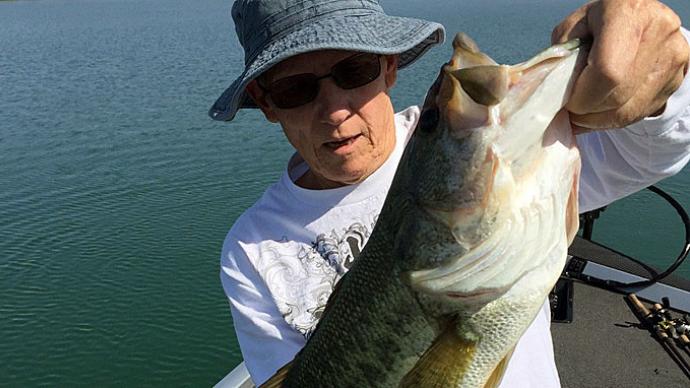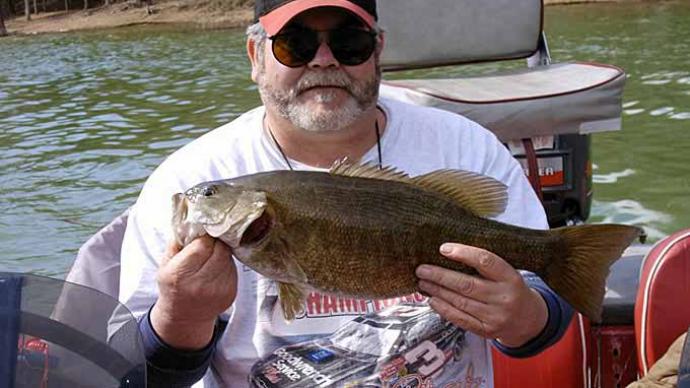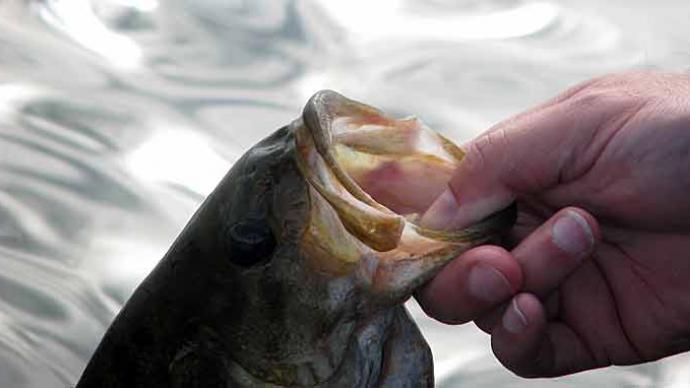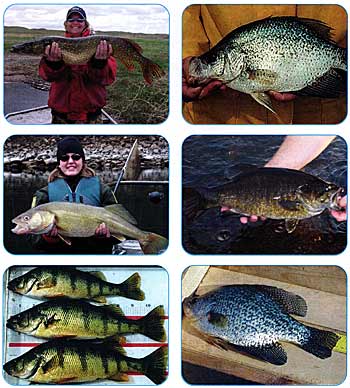
Editor's Note: As most of you know, Dave Willis was a key component of our Pond Boss family. Not only was he a great friend, he was a wonderful human, great fisheries professor, mentor to many students, a great husband, father, and grandfather. We lost Dave six years ago, way too early. As I was going through our archive, looking for an appropriate topic for this issue of the magazine, I found this one, in the May-June 2009 issue. As I read through it, it jumped out to me to run it again, with some updating.
Springtime, and a young fish's thoughts turn toward love. Well, not quite all fishes, but quite a few of them! Let's review the timeline for spring—and summer—spawning pond fishes. There are a few fall-spawning fishes, but they are mostly coldwater fishes such as brook and brown trout.
The list of available species for our chronology depends on location, of course. However, just for fun, let's stir a few of the cool water and warmwater fishes into the mix.
No doubt about it—the first to spawn in any area they live will be northern pike. In fact, during a late winter, they will even spawn under the ice. For spawning, these toothy creatures prefer to lay eggs on flooded terrestrial grasses. In addition, they need relatively fresh water. While adults can survive in water with relatively high salinity, eggs and fry need fresh water. Snow melt is good! The eggs are adhesive. Once pike fry hatch, they are seriously under-developed. They will struggle to swim toward a blade of grass and then stick to it with a cement gland they have on top of their snout. Here they stay for a few days while they absorb their yolk sac and grow a functioning mouth and some fins.
Next in our spawning chronology will probably be walleyes. They spawn in water temperatures from the upper 30s to upper 40s F. They also have a sticky egg, but walleye lay their eggs on clean gravel, if they have that choice. In impoundments or lakes, walleye prefer gravel or even rip-rap where waves have washed rocks relatively clean. We sometimes use the term precocial to describe walleye fry. This means eggs hatch with mouth formed, fins in place, and ready to swim! This characteristic is also a reason biologists can sometimes maintain walleye populations with fry stockings. We don't stock newly hatched fry of very many species.
Yellow perch spawn next. They start in the 40s F and go at it into the low 50s F. Yellow perch have a unique spawning strategy—their eggs are actually encased in a sticky, clear sheath. The gelatinous sheath can be 12 to 20 inches long and perhaps an inch or two across. The sheath helps protect eggs from predation by other fishes and insects. Yellow perch like to wrap their egg masses onto some type of structure, with Christmas trees or other branches being some of the most desirable.
Next, we move into a tie situation. There will be quite a bit of overlap in spawning by smallmouth bass, black crappies, and white crappies. They tend to start in the low 50s F and end by the upper 50s F to low 60s F. All three species of these fish are nest builders. Males build nests, attract a ripe female, and then guard the nest after eggs are fertilized. Eggs hatch into fry, which spend a few days in the nest absorbing the yolk sac. Smallmouth bass males guard the brood of young fry for a short while, even after they start to disperse from the nest. After that, fry find their own way in a cold, wet world. That's why they like rocky habitat in which to hide! All three of these fish species are considered solitary nesters, but nests can be in close proximity. They just are not clumped into colonies.
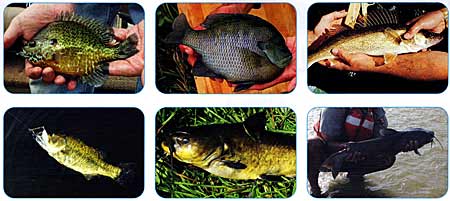
Who's next? Well, let's move to our good friend, the Largemouth bass. They spawn just after the crappies and smallmouths. Water temps? Starting in the low 60s F running up to the upper 60s F or 70s F. They also spawn in solitary nests, with males guarding eggs and then the fry. I'll never forget the first time that I actually saw the guarding behavior. I was snorkeling in a very clear gravel pit along the Colorado front range. What a treat to watch a male Largemouth bass guard a brood of 6,000 or so bass fry that were swimming in a ball that was roughly 3 feet across.
Next, we move on to the sunfish, such as bluegills and pumpkinseeds. Both species are known for their colonial nesting behavior and for spawning more than once in a spawning season. Down south, there can be five or more bluegill spawns each year. In the North Country, we often only see one, although we have documented up to three. Also, this colonial thing—did you know that a small percentage of bluegills nest solitarily? Perhaps 5% of the males do that. One more little piece of genetic diversity that makes the world offish so intriguing and so complex to understand.
Last of all, the catfishes will spawn. They even have their own order—such as channel cats before flatheads. Catfish spawning behavior is also quite variable. The bullheads, black, brown, and yellow are actually nest builders. Mud bottoms and productive waters—that spells bullheads! By the way, do you want to know what other fish spawns in similar habitat and in nests? The zander. Know of them? That's the European pikeperch, which is a larger relative of our North American walleye. Zander do best in eutrophic (productive) water bodies.
Oops, let me get back on track. Catfish. Our good friend, the channel catfish, is a cavity spawner. They like to spawn in hollow logs, in undercut banks, or in milk cans that people used to place in ponds for them to spawn, and then collect the eggs. Temps? The channel cat really is a warmwater fish, spawning when water temperatures are 75-85 F and growing best (fastest) when water temps are 80-85 F. Channel catfish eggs are spawned in a gelatinous mass and the male needs to attend them in the wild. Males need to create enough agitation through body contact to move fresh water with dissolved oxygen into the egg mass. Although eggs don't need a lot of oxygen, they do need some.
Blue catfish and flathead catfish also are cavity spawners. Blue cats spawn about the same time and temperature as channel cats. The flatheads typically spawn just a little later.
Perhaps you've noticed that I was pretty general in this discussion of spawning temperatures for these fishes? Here's one final tidbit on fish and spawning. Fish reproduction tends to primarily be cued by photoperiod—how much light and dark in a day. However, it can be modified somewhat by temperature. Too cold and the fish may delay a while. Too warm and they may start earlier than normal.
So, there's a quick timeline on spawning times for some of your pond fishes. Watch for the progression of spawning in your pond, and see if your fishes follow this pattern.
Reprinted with permission from Pond Boss Magazine

